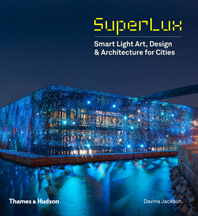In late 2013, Kanye West visited the Harvard Graduate School of Design and said, “I really do believe that the world can be saved through design,” and “everything needs to actually be ‘architected.’” For many, this collision of hip-hop and architecture was unexpected, and the staid crowd of architectural professionals reacted, let’s say, defensively.
But this was hardly the first encounter between the two worlds, as architect and Syracuse University associate professor Sekou Cooke demonstrated at a lecture at AIA New York last Thursday.
The 90-minute presentation, “Towards a Hip-Hop Architecture: New York Edition,” was distilled from a two-day symposium held at Syracuse last March. Both centered on Cooke’s assertion that, while hip-hop and architecture have circled one another, academically, for at least 20 years, the history of the two cultures goes back even further: to the birth of hip-hop itself.
“Hip-hop came out of very specific architectural space,” Cooke said. “The grid becomes this thing that's confining, that now has to become a backdrop upon which to create a new identity.”
He specifically focused on the leftover spaces (parking lots, sidewalks, basketball courts) where people of limited means played and partied, breakdanced and beat-boxed. “This is the dominant condition under which hip-hop emerged,” Cooke continued. “And unlike other artistic forms of cultural expression, hip-hop is at odds with its environment.”
That antagonism resulted in the emergence of Kurtis Blow and Grandmaster Flash, N.W.A. and Public Enemy, Biggie Smalls and Tupac Shakur, Jay-Z and Kanye, Wiz Khalifa and Kendrick Lamar. Graffiti and tagging became an outlet for generations of visual artists. B-boys fundamentally altered dance. But architecture remained elusive. For decades, lack of resources effectively prevented urban youth influenced by hip-hop in the 1970s and ‘80s from entering the field.
But as DIY ethos took root and barriers of access eased, the relationship between the two cultures began bearing fruit in installation art, new practices, and, possibly, the first hip-hop buildings.
“Maybe architecture is such a slow process that the hip-hop generation is just now coming of age, and just now getting to the point where they're able to make architecture that is on their terms,” Cooke said.
One firm he highlighted was St. Paul, Minnesota-based 4rm+ula Architects. One of its principles, James Garrett, Jr., is a graffiti artist who uses architecture to transform a flat mode of expression into three-dimensional forms. 4rm+ula’s design for the Juxtaposition Arts Center, a hip-hop arts foundation in St. Paul, for example, has a kinetic lighting system that amplifies the movement of the people inside and allows it to radiate out to the street.
The arts center is unbuilt, but it’s tempting to point to it as indicative of what hip-hop architecture looks like. Cooke, however, warned against such proclamations. Hip-hop is too individual to be pegged to one aesthetic mode.
To prove his point, he projected an image of ITN Architects’ The Hive Apartment complex in Melbourne, Australia. Designed by Zvi Belling with his neighbor, an older graffiti artist called Prowla, one side of the building features the word “HIVE” imprinted in giant graffiti letters.
Where 4rm+ula’s rendering received nods of approval from the AIA crowd, the sight of the Hive caused groans to ripple through the room.
“The truth is there is no list of identifying characteristics that make up hip-hop architecture,” Cooke said. And that's where the concept gets murky. “If it's truly architecture, if it confines to the profession, then can it truly be hip-hop at the same time? Hip-hop wants to operate in a completely different mode, a completely different environment outside those lines.”
As evidence of this struggle, Cooke explained where his work and research meets the most resistance: members of the architectural establishment pushing back anonymously online, and hip-hop die-hards who think this topic shouldn’t be explored in the academy.
“For the sake of architecture,” Cooke said, “we have to get to a place where the hip-hop community takes us seriously, and not the other way around.”
But who accepts what is a secondary concern. What’s of greater consequence is the impact the hip-hop architecture conversation has on a profession dominated, primarily, by white men shaping the built environment.
“It's not important how well we're dotting our i's and crossing our t's to fit into this -ism,” Cooke said. “What's more important is that we recognize that there are people who want to practice architecture, professionally, in a different way than the profession allows for right now.”








Post a comment to this article
Report Abusive Comment